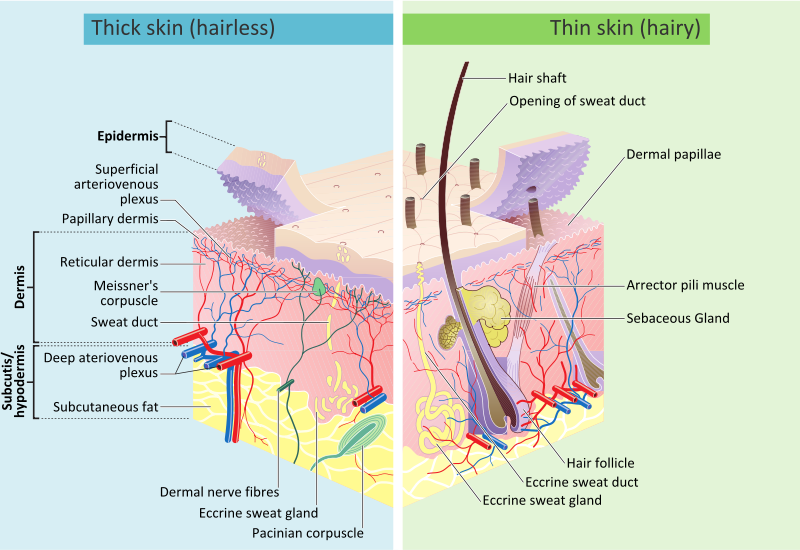Skin can easily be taken for granted. It is constantly growing and changing, working hard to protect our bodies from infections, heat, and other traumas.
It also protects the body from damage caused by ultraviolet (UV) radiation (such as from the sun or sunlamps). Your skin stores water and fat. It helps control body heat. Also, your skin makes vitamin D.
Skin helps to keep us the right temperature while allowing us to move freely. And skin gives us the pleasurable sense of touch.
All of this while looking so beautiful.

- Epidermis. This is the top layer, which we see. The epidermis is made primarily of flat cells called “keratinocytes” or squamous cells. These serve as our armor. Although the epidermis may look inert, it is constantly being regenerated and responding to the environment. The keratinocytes are constantly being shed and replaced by new cells that grow at the base of the epidermis. These round cells are called basal cells. It takes about 2-4 weeks for the new cells to grow and make their way to the surface. Melanocytes in the skin create pigment called melanin that gives skin its color. When exposed to the sun, these melanocytes make more melanin to try to protect the body from the damaging effects of ultraviolet radiation. The production of extra melanin makes skin darken. This how the body tans after being in the sun.
- Dermis. This second layer is hidden beneath the epidermis. The dermis contains nerves, blood vessels, and sebaceous glands that produce natural protective oils (sebum), eccrine glands that produce sweat, and hair follicles. The dermis contains proteins called collagen and elastin that give skin its strength and flexibility. As we age, the amount of collagen and elastin decreases, leading to thinner, less elastic skin.
- Fat layer. The deepest layer of skin is made up of subcutaneous fat (“subcutaneous” means beneath the skin). This helps keep us warm and acts as a cushion for the tissues beneath.
The hair on your body is an extension of your skin. Each hair follicle produces a single hair that grows up through a hair shaft. There are hair follicles all over the body, except the palms of your hands and soles of your feet. Some hair follicles create the thick hair found on the head called terminal hair, but most hair follicles create vellus hairs. Vellus hairs are the small, thin, peach fuzz-like hairs.
Each hair follicle is connected to a sebaceous gland that produces the oil called sebum. The sebum rises to the surface through the hair shaft or pore to help lubricate the skin and keep the hair shiny and waterproof. Acne develops when the pore is blocked.
Take good care of your skin:
- Follow recommendations for skin care.
- Use a sunscreen daily.
- Follow sun protection measures.
- Perform monthly skin self-examinations.
Source: Vivacare
Last updated : 1/8/2019